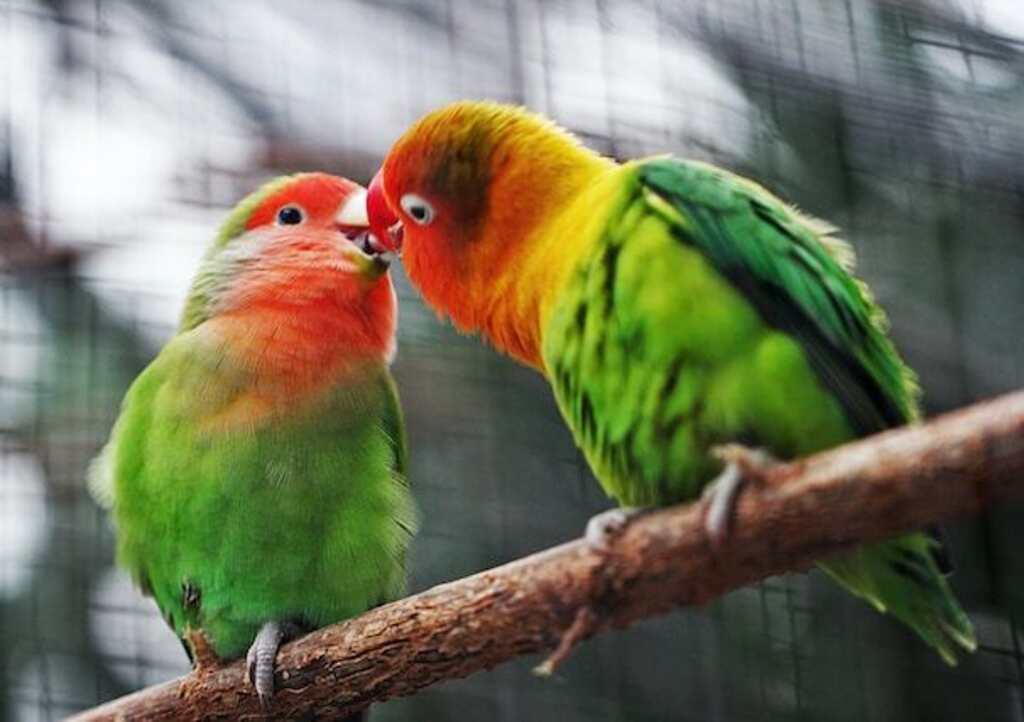Why Do Birds Kiss? Ah, the mysteries of avian affection! If you’ve ever spotted two lovebirds engaging in a beak-to-beak smooch, you might wonder what drives these feathered romantics.
In this article, we’ll uncover the surprising reasons behind bird kisses, exploring their secret language of love. Get ready to peck into the fascinating world of avian amore!
Table of Contents
- 1 Definition of Bird Kissing
- 2 Importance of Studying Bird Behavior
- 3 Purpose of the Article
- 4 The Science Behind Bird Kissing
- 5 The Cultural Significance of Bird Kissing
- 6 Conclusion
- 7 FAQs: Why Do Birds Kiss?
- 7.1 Do birds really kiss?
- 7.2 What is bird “kissing” behavior?
- 7.3 Why do birds engage in beak touching?
- 7.4 Is bird “kissing” exclusive to mating pairs?
- 7.5 Can birds of different species “kiss”?
- 7.6 Do all bird species exhibit “kissing” behaviors?
- 7.7 What is the significance of beak color during bird “kissing”?
- 7.8 Can birds “kiss” humans?
- 7.9 Are there any risks associated with bird “kissing”?
- 7.10 How can I encourage “kissing” behaviors in pet birds?
- 8 Author
Definition of Bird Kissing
Bird kissing is when two birds press their beaks together and move them around in what appears to be an affectionate manner.
It can last for several minutes and can often involve preening each other’s feathers or making vocalizations.
The act of bird kissing is not exclusive to mating pairs, but can also be seen between family members or even between birds of different species.
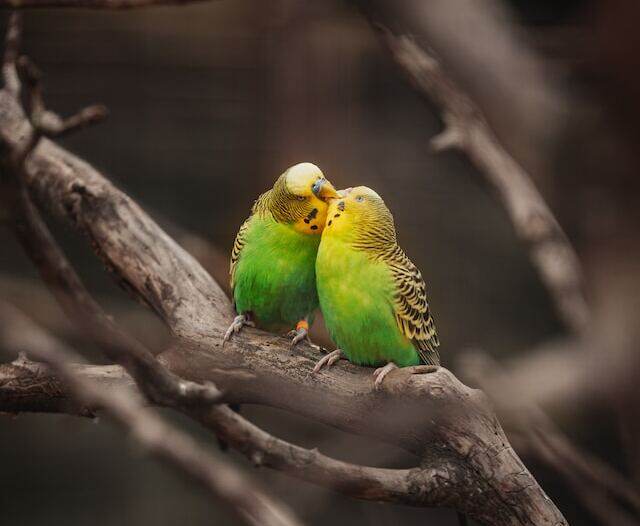
Importance of Studying Bird Behavior
Studying the behavior of animals provides valuable insights into their biology and ecology.
Observing how animals interact with each other can uncover information about social structures, communication methods, and mate selection processes.
In addition to this baseline knowledge, understanding animal behavior has practical applications in conservation efforts.
Understanding Avian Communication
As birds lack vocal cords like mammals do, they have evolved unique methods for communicating with each other. Bird kissing is just one example of how birds express themselves through physical contact and vocalizations.
Mate Selection Processes
Observing bird mating rituals and behaviors helps us understand how species select mates and maintain genetic diversity within populations.
Purpose of the Article
The purpose of this article is to provide a comprehensive understanding of bird kissing from a scientific perspective.
By exploring the diverse types of kisses, delving into the chemical reactions involved, analyzing species-specific behaviors, and uncovering the intriguing folklore surrounding bird kisses, we aim to shed light on this captivating behavior.
Through the study of bird kissing, we gain insights into avian communication, mate selection processes, and the intricate social lives of our feathered friends.
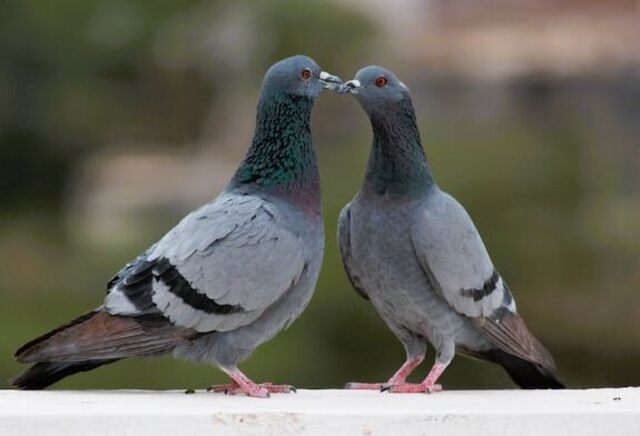
The Science Behind Bird Kissing
Types of bird kisses
Kissing is not just a human behavior; many species of birds also engage in kissing. However, bird kissing does not involve the same physical contact as human kissing.
Instead, it is a behavior where birds touch beaks or bills with their partners. There are different types of bird kisses, including mutual preening, billing, and allopreening.
Mutual preening involves birds grooming each other’s feathers with their bills. This type of kiss helps to keep the feathers clean and healthy, and it also strengthens the pair bond between the birds.
Billing is when two birds touch their beaks together in a more intimate way than mutual preening; this behavior helps to strengthen the pair bond even further.
Allopreening is when one bird grooms another bird’s feathers; this is often seen in pairs that are preparing to mate.
Chemical and hormonal reactions during kissing
Birds have specialized glands in their bills that secrete a variety of chemicals that play a role in mate attraction and bonding.
When two birds engage in kissing, these chemicals are exchanged between them, leading to an increase in hormone production.
One study found that when zebra finches engaged in bill touching behaviors similar to kissing, there was an increase in dopamine production and neural activity associated with pleasure centers in the brain.
This suggests that bird kissing may be pleasurable for them. Additionally, some species of birds have specialized glands on their breasts that secrete hormones involved in reproduction and bonding.
When they engage in mutual preening or billing behaviors, these hormones are exchanged between partners.
Role of kissing in mate selection and bonding
Kissing plays an important role in mate selection for many species of birds by helping individuals assess potential mates for compatibility based on chemical cues exchanged during bill touching.
These cues can indicate things like genetic compatibility, immunological compatibility, and overall health. Once a pair has formed, kissing serves as a way to maintain the pair bond and strengthen the relationship.
Some species engage in kissing throughout the day, while others reserve it for specific times, such as before mating or during courtship displays.
Bird kissing is an important behavior that plays a role in mate selection and bonding among many species of birds.
Chemical and hormonal reactions during kissing may provide pleasure for birds and help indicate potential mates’ genetic compatibility.
Understanding these behaviors can shed light on avian behavior and improve our overall understanding of animal communication and socialization.
Different Bird Species and Their Kissing Habits
Birds are one of the most fascinating creatures on earth, not just because of their ability to fly but also because of their social behaviors.
Their unique ways of expressing affection and bonding with their partners have been studied for many years. Bird kissing is one such behavior that has attracted a great deal of attention from researchers.
The ways in which different bird species display this behavior can vary greatly. Here we will explore the kissing habits of some popular bird species.
Albatrosses
Albatrosses are known for their long-lasting relationships and elaborate courtship rituals. They use a range of displays to signal interest to potential partners, including bill fencing, sky pointing, and allopreening (mutual preening).
When it comes to kissing, albatross couples rub their beaks together in a ritualistic manner. This act helps reinforce the bond between the pair while also conveying information about each bird’s individual identity.
Penguins
Penguins are known for their monogamous relationships that can last for several mating seasons. These birds display affection in several ways, including singing together and presenting each other with pebbles as gifts.
However, when it comes to kissing, penguins do it quite differently from other birds – they use a technique called “billing.” Billing involves touching or tapping beaks together repeatedly while making vocalizations.
Parrots
Parrots are intelligent birds that have been known to mimic human speech and exhibit complex social behaviors.
When it comes to kissing, parrots typically touch beaks or bills with their mates as part of an elaborate courtship ritual. This behavior is often accompanied by regurgitation and feeding between the two birds.
Doves
Doves are well-known symbols of love and affection due to their association with Valentine’s Day and weddings.
These birds are monogamous and display a range of affectionate behaviors towards their partners, including cooing, preening, and kissing.
Dove kissing involves the birds touching their beaks together in a gentle, repetitive motion.
Other Bird Species
Birds that kiss are not limited to just these four species. Many other bird species also exhibit this behavior, including swans, lovebirds, and cockatiels.
While the specifics of how they express affection may differ from species to species, the underlying purpose remains the same – to reinforce pair bonds and communicate information about individual identity.
Birds have a unique way of expressing love and affection through their kissing behavior.
Studying these behaviors can provide valuable insights into avian social dynamics, as well as help us better understand our own complex social lives.
By exploring the different kissing habits of various bird species, we can appreciate even more the diversity of life on our planet.
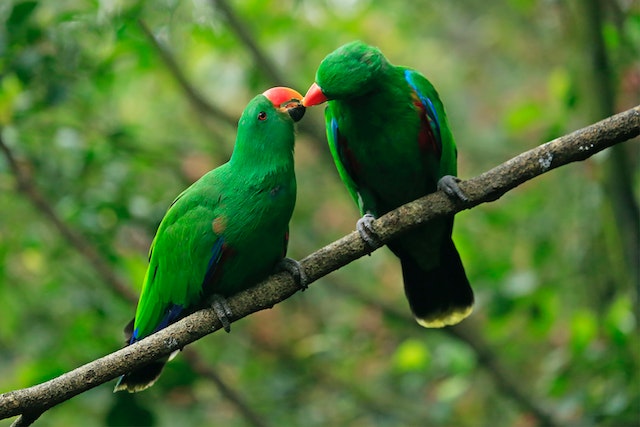
The Cultural Significance of Bird Kissing
Symbolism in Literature and Art
Birds have inspired countless works of literature and art over the centuries. In many cultures, they are seen as symbols of love, peace, and freedom. This symbolism has translated into a fascination with bird kissing.
Some famous examples include the poem “The Owl and the Pussycat” by Edward Lear, which describes the “bong tree” where birds “married” by exchanging wedding rings made of “piggy-wig” and “turkey twizzle”.
In art, bird couples are often depicted in romantic settings such as gardens or on branches.
In Western literature, birds commonly symbolize love because they are monogamous creatures.
For example, Shakespeare’s play Romeo and Juliet features a scene where Romeo likens his love for Juliet to that of a bird:
Quote: “Arise fair sun and kill the envious moon / Who is already sick and pale with grief / That thou her maid art far more fair than she: / Be not her maid since she is envious; / Her vestal livery is but sick and green / And none but fools do wear it; cast it off.”
Citation (MLA style): Shakespeare, William. Romeo and Juliet. Act II, Scene II.
This comparison to birds emphasizes the purity and devotion of their relationship.
Folklore and Mythology Surrounding Bird Kissing
Bird kissing has also been woven into myths, legends, and folklore across many cultures. One example is found in Greek mythology with Zeus’s transformation into a swan to seduce Leda.
According to legend, Leda was sitting beside a lake when Zeus approached her as a swan. They kissed – or rather he pecked her – which led to an egg being laid from which Helen of Troy was born years later.
In Native American culture, different bird species were believed to hold different meanings when it came to kissing.
For example, the Cherokee believed that if a couple saw a cardinal together, it was a sign of good luck and they would have a happy marriage.
In Japan, cranes are said to mate for life and represent longevity, so they are often featured in wedding ceremonies. In many cultures around the world, kissing birds are also seen as messengers or symbols of hope.
In African folklore, an eagle carrying a snake is believed to bring good fortune to those who witness it.
Similarly, in Norse mythology, Odin had two ravens named Huginn (Thought) and Muninn (Memory) that would fly across the world to bring him news of what was happening.
The Possible Origins of Bird Kissing
It’s possible that humans began imitating bird behavior because birds have been observed engaging in courtship rituals for millions of years.
Some scientists believe that bird kissing may have evolved from beak rubbing and mutual grooming behavior. By engaging in these behaviors, birds may be strengthening their social bonds with each other.
Another possibility is that bird kissing evolved as a way for birds to transfer food or regurgitate food between parents and offspring.
This behavior helps young birds learn how to eat solid foods and strengthens the bond between parent and child.
The Ethical Implications of Studying Bird Kissing
There are ethical implications associated with studying bird behavior such as kissing.
While observing animal behavior can provide valuable insights into the natural world and help us better understand our own place within it, we must be careful not to interfere with or harm animal populations during our research endeavors.
Researchers must adhere to ethical guidelines when conducting studies on animal behavior to ensure their safety and well-being is preserved.
This includes properly collecting data without causing undue stress or injury to animals.
Bird kissing has various cultural significance across different parts of the world – from literature and art symbolism through to myths and legends.
It has a long history of significance and fascination, which continues today.
Understanding the possible origins of bird kissing can provide valuable insights into avian behavior and evolution.
Therefore, it is important that researchers continue to study this fascinating behavior while also respecting the ethical implications of doing so.
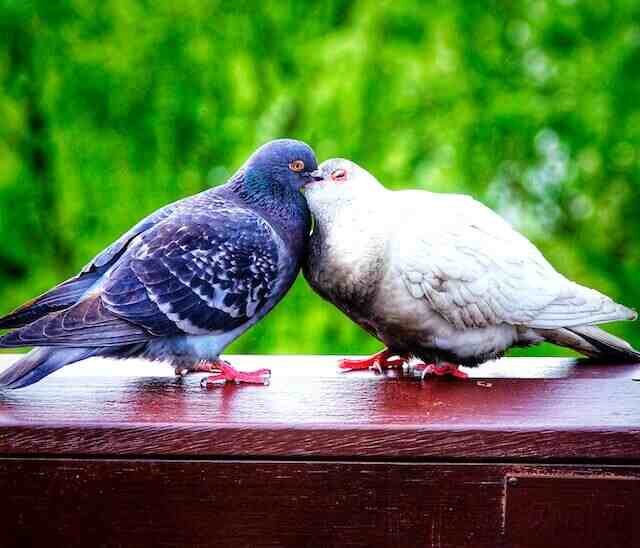
Conclusion
After an extensive review of scientific literature and observation of various bird species, it is clear that kissing plays a vital role in avian behavior.
Bird kissing is not just a simple gesture, but a complex action that involves multiple chemical and hormonal reactions.
It serves as a crucial tool in mate selection, bonding, and communication between birds.
Birds have different types of kisses that are unique to their species. Albatrosses use synchronized head movements while penguins rub their beaks together.
Parrots use tongue-to-tongue kisses while doves use bill clapping sounds during their courtship displays. These unique kissing techniques have implications for the evolution of avian behavior.
The cultural significance of bird kissing has also been explored through art and literature, revealing the symbolism attached to this action.
From ancient mythology to modern-day poetry, bird kissing has played a significant role in human culture.
Future research should aim to explore the underlying mechanisms involved in bird kissing further.
The complex chemical reactions involved suggest that certain hormones and neurotransmitters may play an essential role in this behavior.
Understanding these mechanisms will help us understand better how birds communicate with each other.
Bird kissing is not just an adorable display of affection; it is a vital part of avian behavior with implications for mate selection and bonding.
Studying this behavior gives us insights into the complex lives of birds and helps us appreciate them more fully as living creatures with emotions and social connections similar to our own.
As we continue to learn more about the intricacies of bird behavior, we can look forward to gaining new insights into one of nature’s most fascinating phenomena: avian communication through kissing.
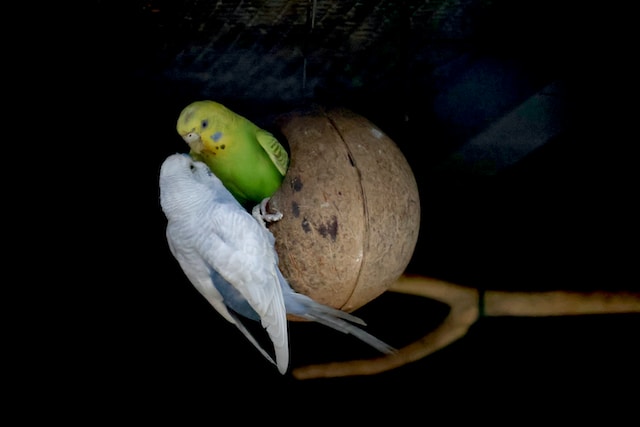
FAQs: Why Do Birds Kiss?
Do birds really kiss?
No, birds do not kiss in the same way humans do. Their behaviors may appear similar to kissing, but it serves different purposes.
What is bird “kissing” behavior?
Bird “kissing” is a term used to describe behaviors like beak touching or rubbing. It is a form of social bonding, courtship, or communication among birds.
Why do birds engage in beak touching?
Beak touching strengthens pair bonds and reinforces social connections. It is a display of affection, trust, and communication between birds.
Is bird “kissing” exclusive to mating pairs?
No, bird “kissing” behaviors can occur between mating pairs as well as within family groups or flocks. It serves various social purposes.
Can birds of different species “kiss”?
Yes, birds of different species may engage in beak touching or rubbing as part of social interactions. It is not limited to birds of the same species.
Do all bird species exhibit “kissing” behaviors?
No, not all bird species exhibit the same type of “kissing” behaviors. The presence and frequency of these behaviors vary among different bird species.
What is the significance of beak color during bird “kissing”?
Beak coloration can play a role in courtship displays and mate selection. Vibrant or distinctive beak colors may be attractive to potential mates.
Can birds “kiss” humans?
While birds can form close bonds with humans, their beak touching behaviors are primarily for social interactions with other birds.
Are there any risks associated with bird “kissing”?
Generally, bird “kissing” poses no significant risks. However, it’s important to ensure a safe and stress-free environment for the birds during these interactions.
How can I encourage “kissing” behaviors in pet birds?
Providing a stimulating and enriching environment, along with positive interactions and socialization, can encourage birds to engage in “kissing” behaviors with their human companions.

